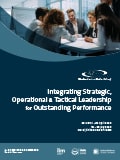An intensive professional development training course on
Artificial Lift Systems
Selection and Design
Why Choose this Training Course?
This AZTech training course provides an overview of well-performance evaluation leading to determination of well conditions necessitating application of artificial lift. The various types of artificial lift systems along with their selection criteria are presented. The theoretical and practical aspects of the most important artificial lift methods will be covered, so that at the end of the training course the participants will have a sound knowledge of the theory underlying each method as well as a abroad view of the relative advantages, disadvantages, niche of applications and limitations of each artificial lift system.
This AZTech training course will feature:
- Reservoir performance: inflow and outflow relationships
- Effects of the artificial lift technologies against the stimulation operations
- Design, equipment and accessories of the artificial lift systems
- Artificial lift screening: criteria for selection of the artificial lift systems
- Limitation and advantages of the artificial lift systems
What are the Goals?
By the end of this AZTech training course, participants will be able to:
- Apply and gain an in-depth knowledge on the subsurface production operations
- Explain reservoir performance such as inflow & outflow relationships
- Apply and gain proper techniques on artificial lift systems and optimization technology
- Discuss criteria for artificial lift system selection and artificial lift screening methods
- Apply basic design and analysis concepts and specify the main components needed for each artificial lift system (gas lift systems, ESP systems, sucker rod pumping, jet pumps, hydraulic pumps and progressive cavity pumps)
Who is this Training Course for?
This training course is suitable to a wide range of professionals but will greatly benefit:
- Production engineers, supervisors, petroleum engineers who are new to the profession, field operators and technicians
- Company staff involved in critical lift and the subsurface production operations
- Completion, reservoir and drilling engineers concerned with well performance & production enhancement facilities
- Managers and government officials and others involved with the production systems
- Technical and operations staff from other disciplines, who require a cross-training to or a basic understanding of the subsurface production operations
How will this Training Course be Presented?
This AZTech training course will utilise a variety of proven adult learning techniques to ensure maximum understanding, comprehension and retention of the information presented. The course is designed as a blended environment of presentation; workshops; group work; practical exercises; field application/ analysis and several industry videos showing all processes; and general discussions.
The Course Content
Day One: Reservoir Performance: Inflow and Outflow Relationships
- Reservoir performance: wellbore and reservoir performance overview
- Pressure loss in the wellbore
- Well productivity
- Concepts of productivity index
- Inflow and outflow relationships
- Formation damage
Day Two: Why and When do We Need Artificial Lift?
- Well production problems: asphaltenes, waxes, hydrates, inorganic, scale formation, corrosion
- Formation damage causes and prevention techniques
- Impact of changing well conditions and need for artificial lift
- Overview of artificial lift technology: sucker road pump design, hydraulic pump design, jet pump, gas lift, ESP
- Application of artificial lift technology and its limitations
- Artificial lift screening methods
Day Three: Sucker Rod Pumping and Gas Lift System
- Concept, limitations and advantages of the sucker rod pumping system
- Design and components of the sucker rod pump
- Troubleshooting of the sucker rod pump systems
- Concept and types of the gas lift system
- Design and components of the gas lift system
- Limitation and advantages of the gas lift system
Day Four: ESP System
- Concept, equipment and accessories of the ESP system
- ESP design: pump performance curves, pump intake curves, typical problems, installation, troubleshooting ; best practices for installation and maintenance;
- Steps to correctly size an electric submersible pump (ESP) system. basic sizing principles for the pump, motor and cable
- Importance of correctly matching well productivity to pump performance
- Use of data to diagnose well/equipment problems
- Limitation and advantages of the ESP system
Day Five: Hydraulic and Jet Pumping / Progressing Cavity Pumping Systems
- Concept, limitation and advantages of the hydraulic pumps
- Concept, limitation and advantages of the jet pumping
- Concept, limitation and advantages of the PCP pumps
- Operating conditions of the hydraulic, jet and PCP pumps
- Best practices for installation and maintenance of the artificial lift techniques
- Criteria for selection of artificial lift systems and artificial lift screening methods
The Certificate
- AZTech Certificate of Completion for delegates who attend and complete the training course
DO YOU WANT TOLEARN MORE ABOUT THIS COURSE?
© 2024. Material published by AZTech shown here is copyrighted. All rights reserved. Any unauthorized copying, distribution, use, dissemination, downloading, storing (in any medium), transmission, reproduction or reliance in whole or any part of this course outline is prohibited and will constitute an infringement of copyright.







